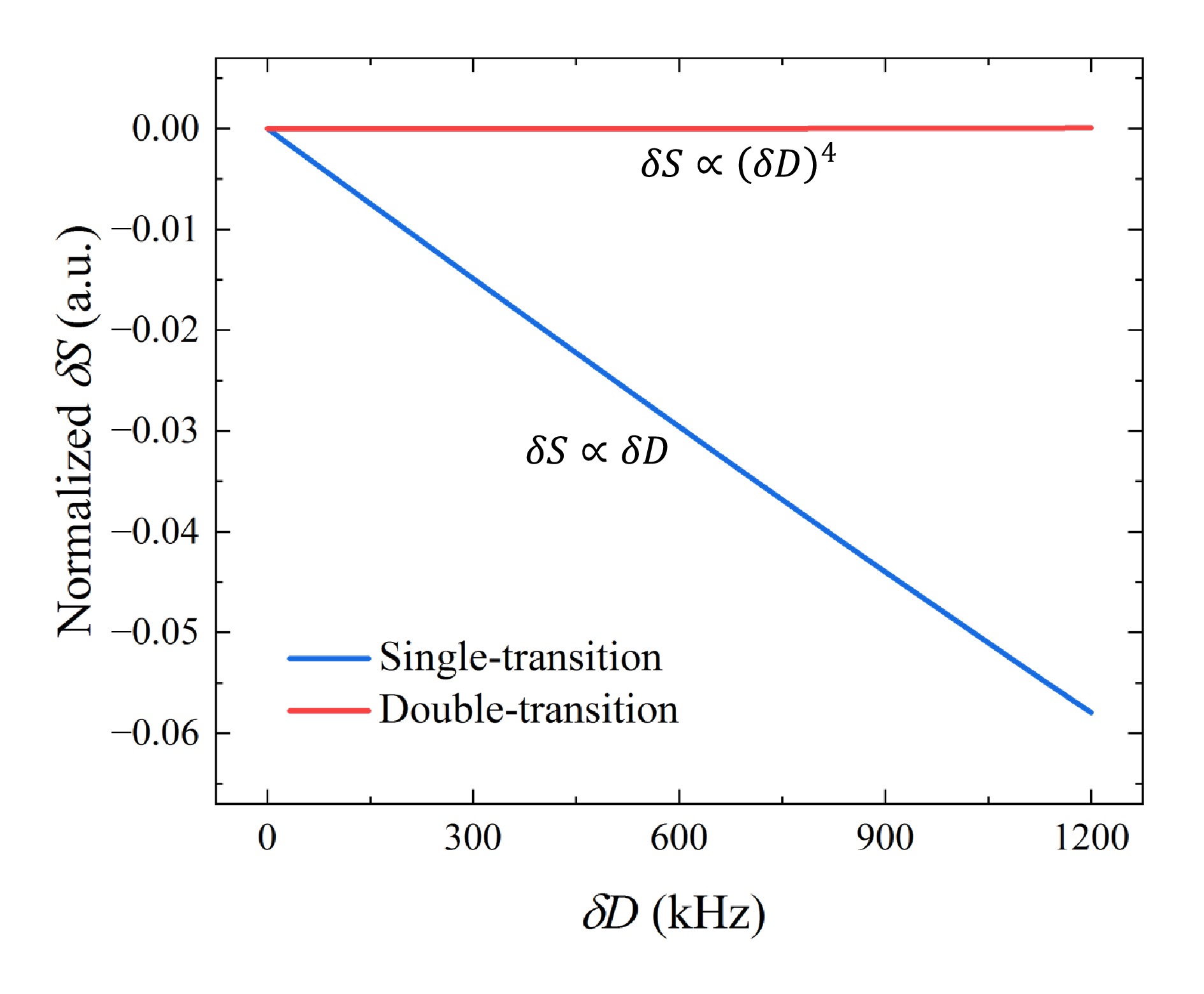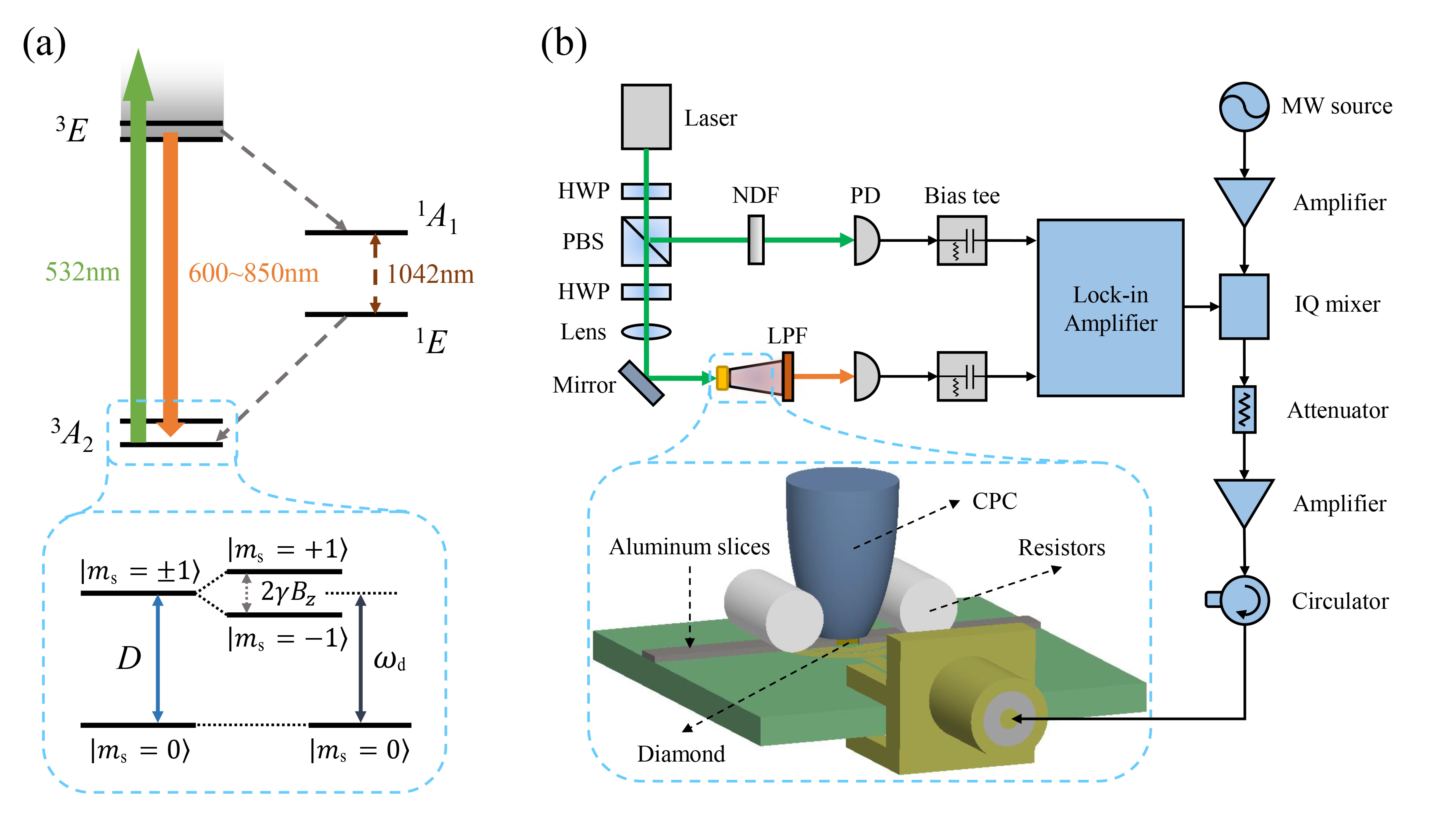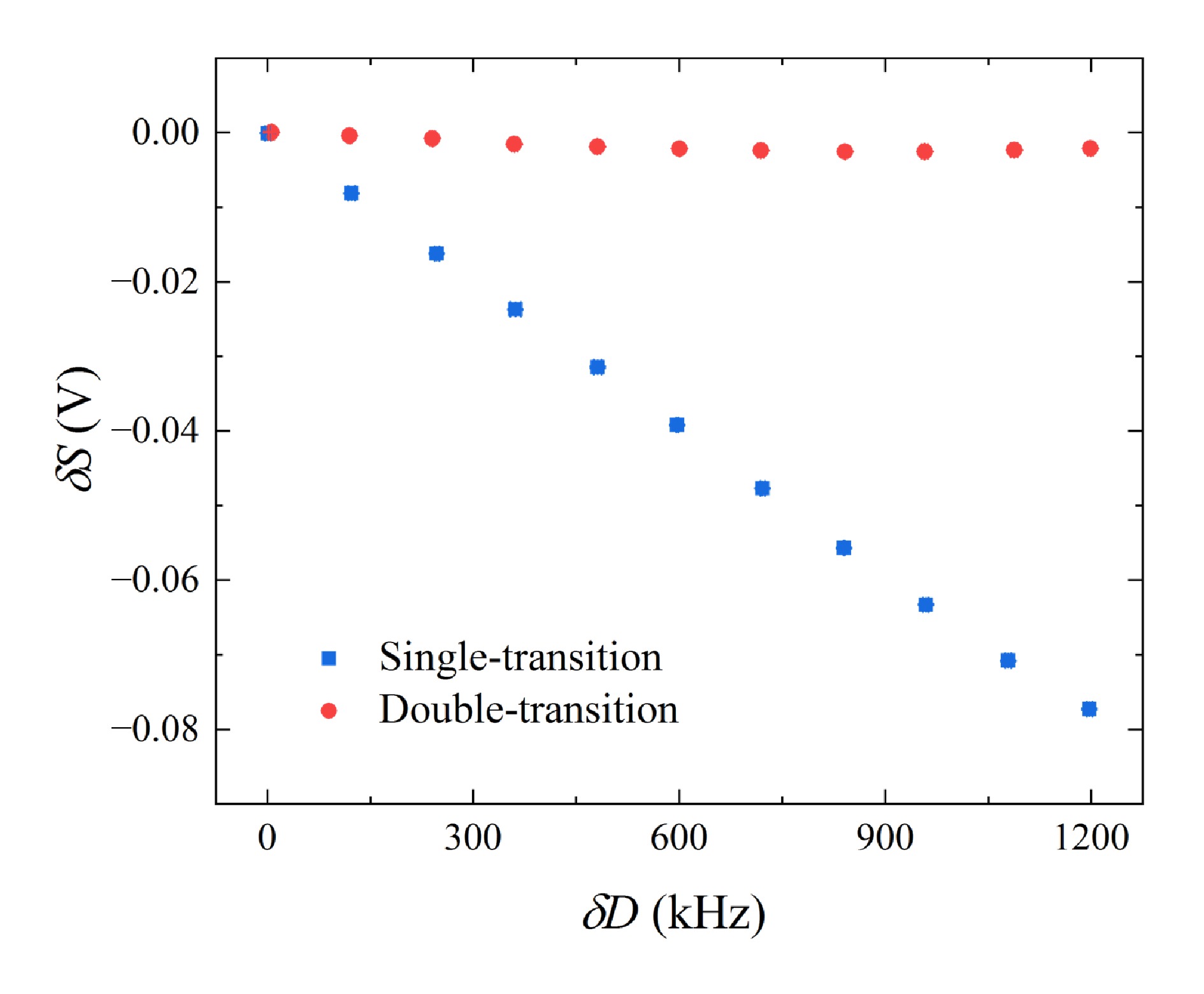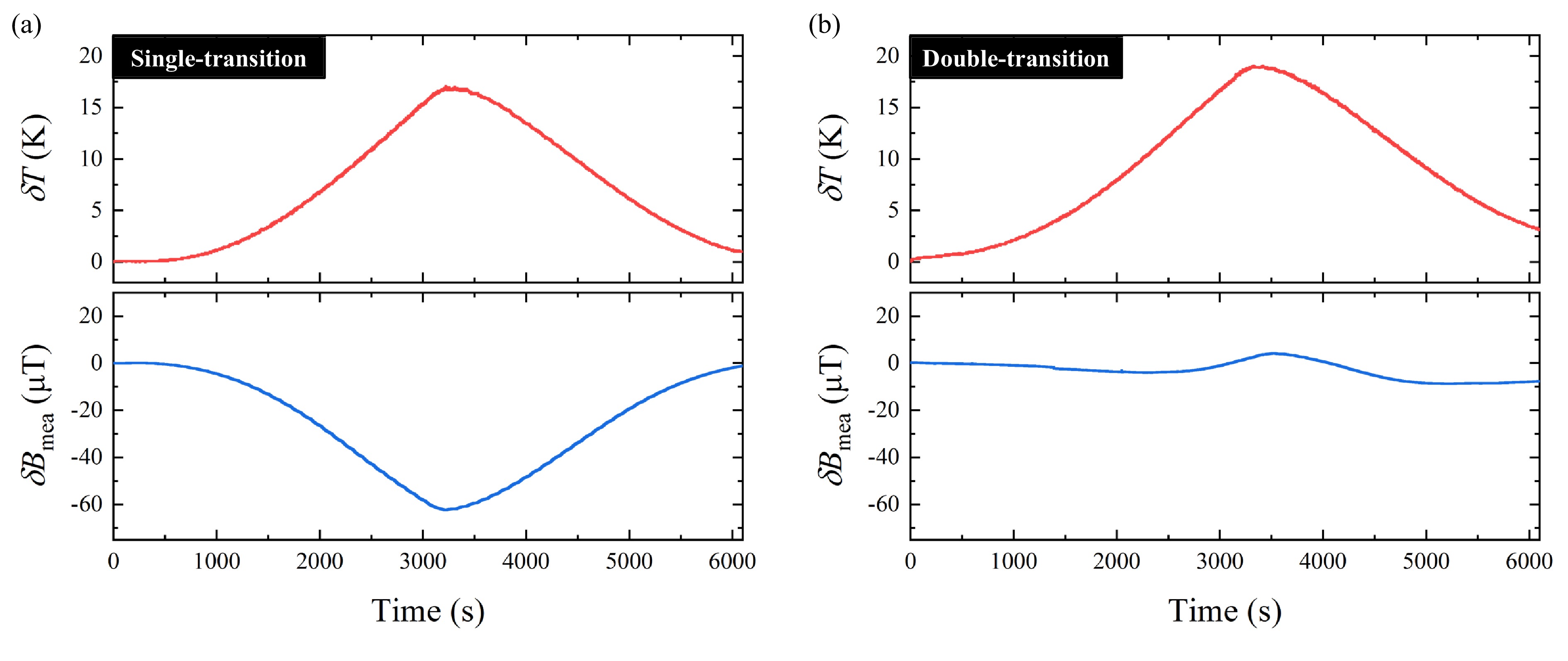
The simulation results of magnetometry signal drifts δS ![]()
![]()
δD ![]()
![]()
δS ![]()
![]()
δD ![]()
![]()
Figures of the Article
-
![]() The level structure of NV center in diamond and the setup of temperature-robust diamond magnetometry based on the double-transition method. (a) Energy-level diagram for the NV center. The external magnetic field
The level structure of NV center in diamond and the setup of temperature-robust diamond magnetometry based on the double-transition method. (a) Energy-level diagram for the NV center. The external magnetic field Bz applied along the NV symmetry axis lifts the degeneracy of|ms=±1⟩ sublevels with a Zeeman shift. (b) The schematic of experimental setup. The green and red arrows represent for the 532 nm laser and fluorescence. A few of components used in the experimental setup like the coil for applying bias magnetic field are not shown in the figure. -
![]() The simulation results of magnetometry signal drifts
The simulation results of magnetometry signal drifts δS as the function of zero-field splitting variationδD for the single-transition and double-transition magnetometry. For the double-transition magnetometry, the normalizedδS is immune toδD . -
![]() The measured magnetometry signal drifts
The measured magnetometry signal drifts δS as the function of zero-field splitting variationδD for the single-transition and double-transition magnetometry. Each data point was acquired for 5 s and averaged. The error bars are smaller than the data points. -
![]() Comparison between the single-transition and double-transition magnetometry working under significant temperature drifts. (a) and (b) Time domain temperature drifts
Comparison between the single-transition and double-transition magnetometry working under significant temperature drifts. (a) and (b) Time domain temperature drifts δT and magnetic field measurement result driftsδBmea of the two types of magnetometry.
Related articles
-
2024, 54(1): 0103. DOI: 10.52396/JUSTC-2022-0165
-
2022, 52(3): 3-1-3-6. DOI: 10.52396/JUSTC-2021-0249
-
2021, 51(3): 185-192. DOI: 10.52396/JUST-2020-0039
-
2021, 51(1): 75-86. DOI: 10.52396/JUST-2020-1140
-
2019, 49(1): 55-62. DOI: 10.3969/j.issn.0253-2778.2019.01.008
-
2015, 45(7): 568-574. DOI: 10.3969/j.issn.0253-2778.2015.07.006
-
2015, 45(7): 555-560. DOI: 10.3969/j.issn.0253-2778.2015.07.003
-
2015, 45(4): 268-274. DOI: 10.3969/j.issn.0253-2778.2015.04.002
-
2014, 44(5): 362-373. DOI: 10.3969/j.issn.0253-2778.2014.05.002
-
2014, 44(4): 339-344. DOI: 10.3969/j.issn.0253-2778.2014.04.012



 Download:
Download:














